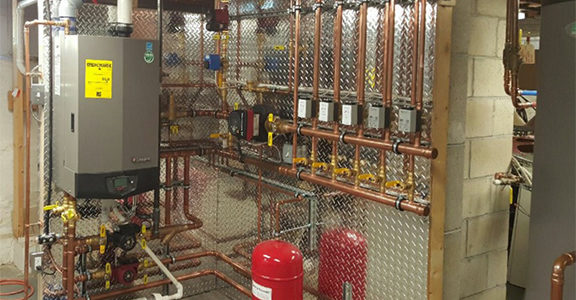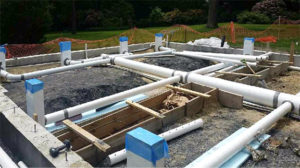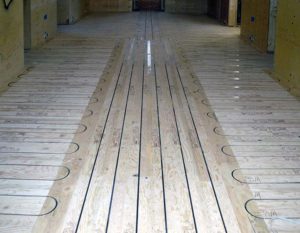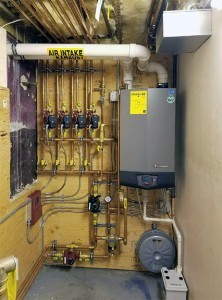The Benefits of High-Efficiency Heating Systems
Heating is the largest energy expense in Boston area homes, and the type of system can have a significant impact on costs, comfort and your carbon footprint. If an existing system is more than
twenty years old you may be spending a lot to keep it running – money that may be better spent on a new, more efficient system.
The most popular central heating systems in this area are furnaces and boilers that burn natural gas or home heating oil. In basic terms, a furnace works by blowing heated air through ducts that deliver the warm air throughout the home via air registers or grills. Boilers are special-purpose water heaters that use a pump to circulate the heated water through pipes to radiators or radiant flooring. In some cases, a combination of ducts and hot water boilers, referred to as a “hydro-air” system, are used.
A central furnace or boiler’s efficiency is measured by Annual Fuel Utilization Efficiency (AFUE) which is the ratio of annual heat output compared to the total annual fuel energy consumed. In other words, an AFUE of 90% means that 90% of the energy in fuel becomes heat and the other 10% escapes up the chimney and elsewhere. (AFUE does not include the heat losses of the duct system or piping) In addition to AFUE, a system’s equipment features are another way to gage efficiency:
Old, low-efficiency heating systems (56% to 70% AFUE)
- Natural draft that creates a flow of combustion gasses
- More challenging venting situations
- Continuous pilot light
- Heavy heat exchanger
- Large volumes of water to heat
- Mostly oversized which causes “short cycling.”
Mid-efficiency heating systems (80% to 83% AFUE)
- Exhaust fan controls the flow of combustion air and gasses more precisely
- Electronic ignition (no pilot light)
- Compact size and lighter weight to reduce cycling losses
- Small-diameter flue pipe
High-efficiency heating systems (90% to 95% AFUE)
- Condenses flue gasses in a heat exchanger at low temperatures
- Sealed combustion
- Advanced controls to match outside weather demands (Outdoor Reset)
- Smaller volumes of water to heat
- Variable capacity operation
Because modern conventional heating systems can achieve efficiencies as high as 95%, a new high-efficiency system can often cut a home’s fuel bills by half and cut annual carbon dioxide emissions by 1.5 tons when heating with gas and 2.5 tons with oil according to energy.gov. Therefore, if your furnace or boiler is old, worn out, inefficient or significantly over-sized, it is likely time to replace it with a modern, high-efficiency model. On top of the energy savings and environmental benefits, there is the added incentive of government and utility company rebate programs to help reduce the cost of a new system. There are many online resources with information about these programs including what is available in your area and heat loans.
Not only can a qualified heating contractor help you make a determination on the system’s condition, they can also help you estimate the heat-loss in your home by evaluating the envelope efficiency and the square footage of wall, roof and floor space exposed to the outside. Then, using the outdoor and desired indoor temperature, calculate the appropriate capacity for a new high-efficiency heating system, which in most cases reduces the size of the system.
FYI: A system’s heat is measured in British Thermal Units (BTU). One kitchen match = 1 BTU; One kilowatt-hour = 3,413 BTU; One therm of gas = 10,000 BTU. *A typical house will use tens of thousands of BTUs on a cold day. (Source: smarterhouse.org) |
For more information on High-Efficiency Heating Systems, available rebate programs or to schedule a consultation, please contact us.





Comments are closed.